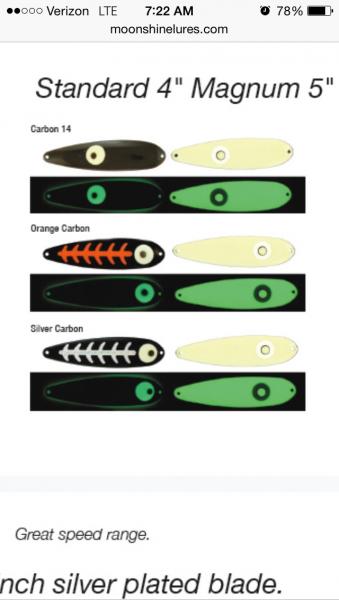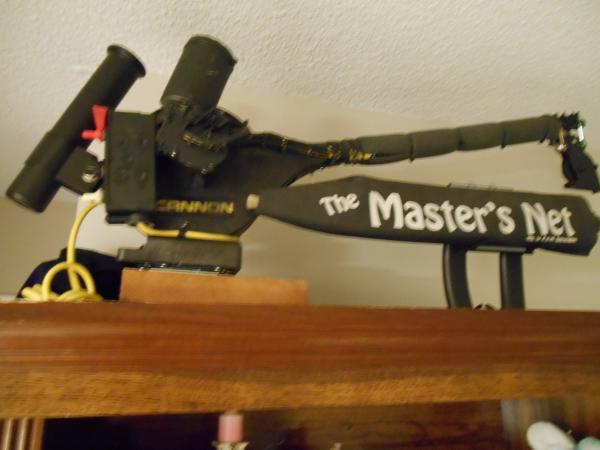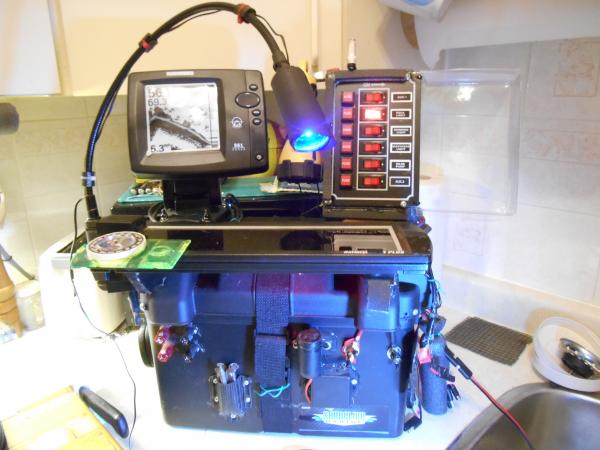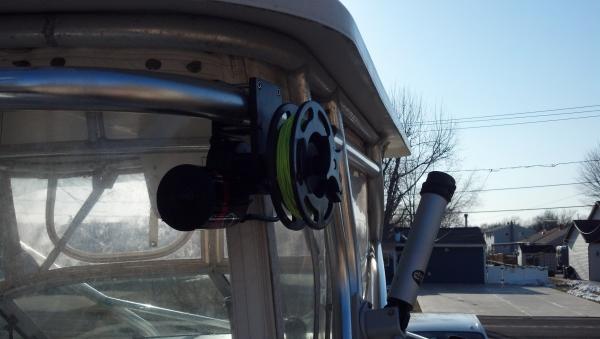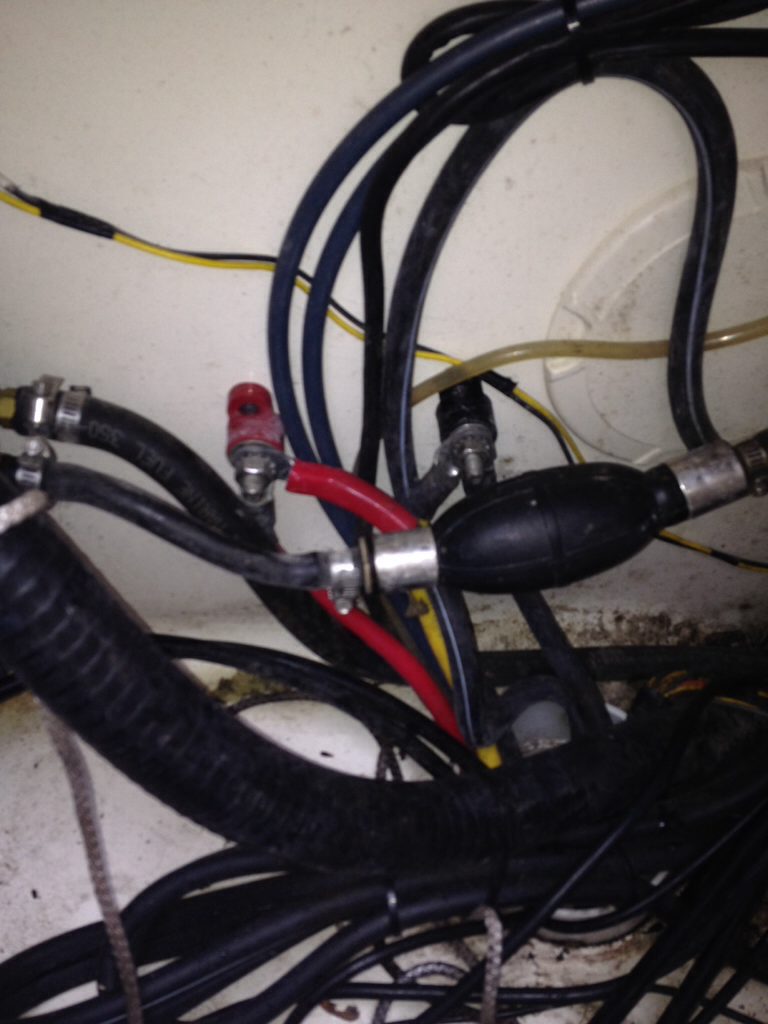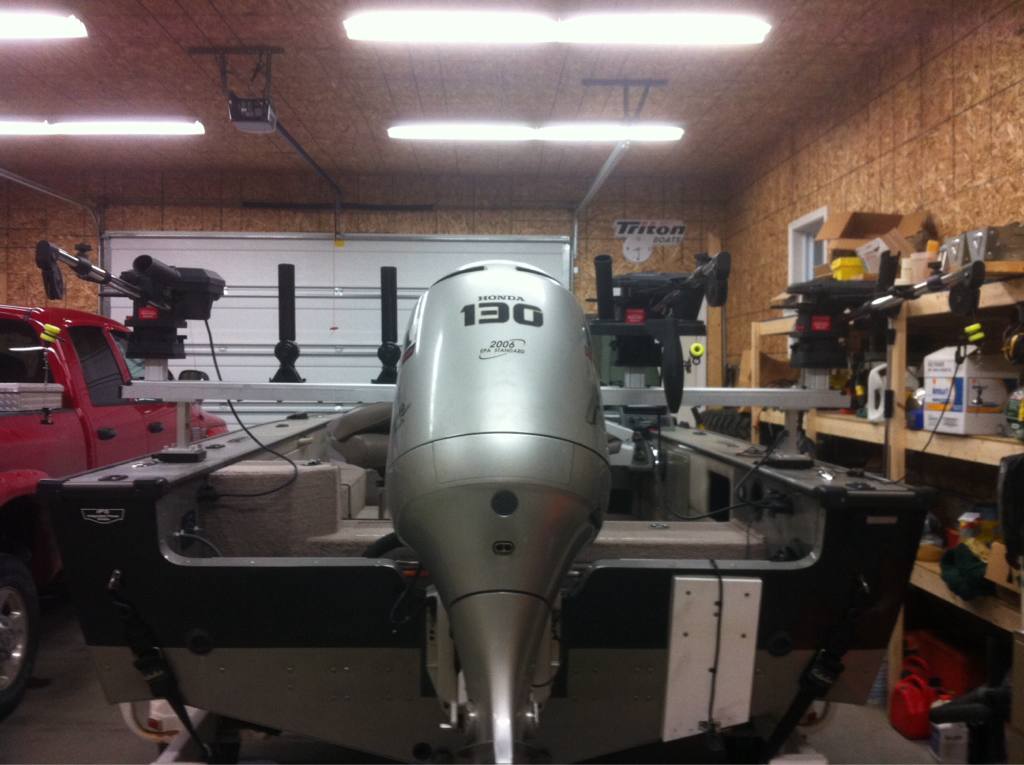-
Posts
74 -
Joined
-
Last visited
Everything posted by RSF
-
I found mounting the DR on rubber, including upper side of securing bolts drastically reduces boat hum/engine noise & vibration from going down the line - steel or other. While my catch frequency went up triple. Also, I use a chartreuse 10" flasher six feet behind the ball, with the silver speckled rubber squid 15" behind the flasher (faster action). Last catch 27 lbs. I also learned how to sharpen hooks (new ones too - triangular as it breaks through mouth cartilage easier than round pointed hooks).
-
As others suggested, does sound like DPDT switch problem. I purchased a Lake Troll manual DR a couple of years ago. Was not going to pay the additional 400-500.00 for the electric, so I modified my manual to electric for about 60.00. Works great - also added a power LED to the tip so I could see the line and ball as it comes to the surface at night when fishing for Walleye
-
-
Do the same test with both plugs removed and record the results. THEN, do the same Only, squirt a couple squirts of two stroke oil in each cylinder first. If the compression jumps more than 15 pounds on either, Rings are worn. If the rings are worn you will lose power and flood the plugs causing it to smoke and misfire.
-

How to add charging to manual-start Merc 9.9 4 stroke?
RSF replied to Gill-T's topic in This Old Boat
I use 6 amp charging system on my main battery from engine. Use a a big deep cycle for the downrigger and electric motor. All day no problems. Between the two batteries I use a Battery Switch which allows for which battery I wish to charge and wish I wish to use. Spin around the lake for 30-45 minutes pretty-much bring the main deep cycle back to full charge. Anyway, both batterys go-on charge once I get home. Or in a pinch, I;ll jump the batterie(s) from the car. All depends how long I'm out and how often I use the big-draw items, mainly the electric 60lb thrust motor. Works for me as I have yet to have a battery problem..oh I do carry a small Min Kota battery charge indicator which willl give me an instant reading of charge condition. -
Check the main Ground from dash to Battery, for that matter just replace it. Tell you the truth, it it were my boat, I'd check all wires and connector right down the line, including ignition wired at switch. Sometimes it's just better to replace than troubleshoot. Clean all batt terminals and solenoid connectors too. I have done a lot of re-wiring of boat electrical, I crimp and solder every connector.
-
Check the diagram, It can be found at "FISH107"
-
Ditto Knotlost. Compression test. First Dry, then Wet. Note each plug condition while performing the Comp test.
-
Assuming it went into gear the year prior, look for a shift seizure somewhere. What motor are we talking about here, GM ? Also, check Iboats forum.
-
1) Check the airfilter, can you see light through it? 4) Check that the timing-advance (under distributor plate isn't stuck from lack of lubrication). 2) Check Choke Butterfly as it may be partly closed preventing enough air down the throat on hole-shot and above a certain amount of RPMs. 3) Change the PCV
-
Use a heavyier gauge for the longer run, but yest it can be done.
-
Sure seems a short's in order. Most intermittent type stuff is, within itself yelling there's a short here.
-
cut-it, strip the wires & solder the core wirezap it with a glue-gun; open the mesh wires on the ground, solder, again zap with the glue gun then cover the area to an inch back of the break with tinfoil, then glue-gue that area. Done.
-
Ditto bigblues thought.
-
Gosh, cover the wires with whatever repels rodents.
-
-
If your lights only work when the selector's in the off position, don't use your boat until someone looks at the wiring.
-
Jigstick's on the mark. I'd add as a rule of thumb your engine cables must always be mounted directly to the starting battery. And any cables running from the battery (primary or secondary) must me fused at the battery first, then to the fuse box wherever it's located. The fuse rate at the battery would be the same or slightly less than the total draw of all electronics attached to the fuse box. The whole idea of having a master fuse at the battery is incase of a short circuit between the fuse box and the battery it could very well result in a fire if No Fuse is used at the battery.
-
Whatever you do, keep this in mind. Each Downrigger must be hooked into it's required fuse rating. If you are going to run one main line to the battery after connecting each fused downrigger power-line to each other (NOT IN SERIES), you must run double the wire gauge eg Each rigger is 12 gauge-original, run your single line at a maximum 6 gauge or less. Secondly attach an inline fuse seven inches from the battery connection, the fuse rating should be 2/3rds the rating of each rigger fuse X 2.
-
Bad Habit, start from scratch. Disconnect batteries first. Work your way from the battery cables and any connectors by cleaning all terminals. If you are using any crimp connectors, cut them off, strip the wires solder and heat shrink them..go all the way up the line to dash controls/gauges and any peripheral electronics connectors. Sometimes it's just easy and more assuring to re-do than Band-Aid. As for your engine surging, depending on which type of engine (Outboard Electric Start or inboard/outboard, the battery connections can have 0 effect to huge effects on engine performance depending on what your running engine wise. Think one of the bigger clues to your electrical troubles is the fuel gauge as the more fuel in the tank, the more ground is being sent to the gauge.
-
Break out the multi-meter. Somethings not right here. Could be as simple as a bad ground connection, low battery condition but if your losing instruments on low rpm, depending on the alternator eg small outboard, it may be producing only 5-8 amps to RECHARGE battery. Also, Always keep your batteries charged before going out and don't x-link as a weak or poor battery condition will drain the good one. Battery switches should only be used to link two batteries in parallel when need to start the engine due to the battery used to start the engine is too weak to turn the engine over. Each battery should be charged independently.
-
I got a bit tired of hand-reeling my downrigger from the depths of lake Ontario and didn't want to pay the huge price to electrify. So with time, effort and experimentation, managed to make my own Electric Motor add-on to my Cannon. Actually did it twice once about fifteen years ago and the last a couple of years ago. Works great and is powered through the use of a windshield wiper motor. Great winter project and it is possible to pick-up new windshield wiper motors quite cheap.
-
Have a 2003 9.9 Merc made by Tohatsu, bought used from a dealer. Had a problem on cold-starting the first year in that I could not get the engine to fast idle on the start lever nor could I get the choke to fully deploy. During the winter I brought it into the workshop and began looking and the cold start mechanism. It became quite obvious they Tohatsu, were using to many nylon bushings and rotators against metal causing rapid wear. (and poor maintenance lubricating also added to the wear), causing all choke/cold start specs to fall out of measurement and tab-wear so bad full cold start throttle dial didn't move the carb throttle lever at all. Though I fixed the problem with super-hard epoxy and shims, I was surprised the design was so poor. My surprise came, when a friend of mine purchased a 2003 "Tohatsu 9.9" and the cold start choke and throttle systems were the same, except all alloy rotators and bushings with double Teflon liners and shims.
-
Hi, Been reading posts on this site for awhile now and what a wealth of information found here! I'm recently located to St Catharines, it's been many years since fishing Lake Ontario. Fished most major lakes in Ontario North as well as Lake Erie to the south. Have a small new boat now and just converted my manual cannon DR to electric (my own design) to fish deeper water without having to manually crank-up the ball up lol. Very interested in catching up on lake Ontario fishing tactics through all the fantastic information members have been posting here. Scott


